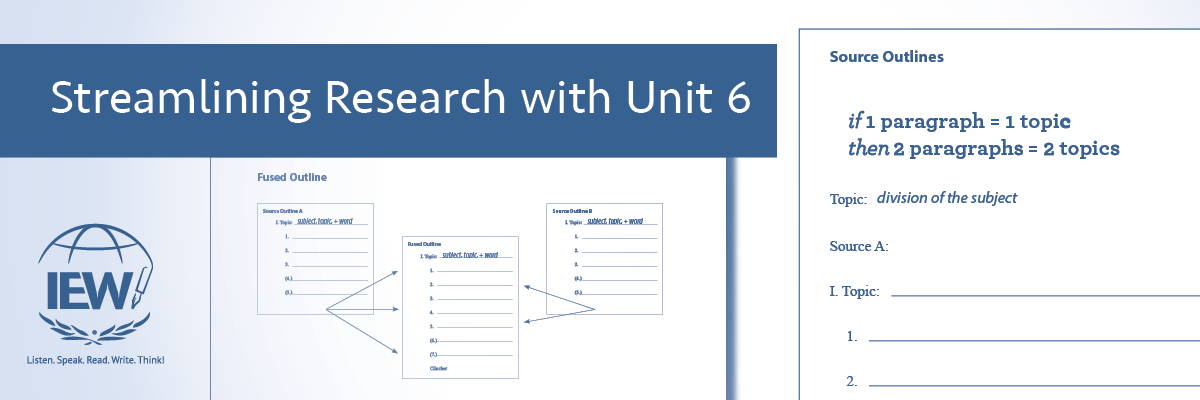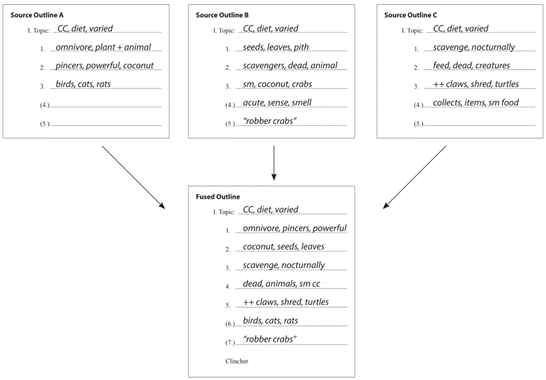
IEW teaches students to write with structure and with style. Style includes vocabulary. Structure is the elements found in compositions. Throughout the year students progress through nine structural units.
At this point in the blog series, we have covered Unit 1 through Unit 5. It is now time to advance to Unit 6: Summarizing Multiple References, an extension of Unit 4. In Unit 4 students wrote topic-based paragraphs using a single source. Initially, students were assigned one topic and wrote one paragraph. As they grew in their abilities to limit details, they advanced to writing multiple paragraph reports, each about one specific topic.
During the process they learned that a paper will be about a single subject and each paragraph in the paper is about a specific topic related to that subject. A three-paragraph paper about horses may contain one paragraph about breeds, one paragraph about care, and another about training. Older students should be challenged to choose narrow, more specific topics. If a high school student writes a three-paragraph paper about horses, the paper may include one paragraph about nutrition, one paragraph about grooming, and a third paragraph about veterinary care.
In Unit 6 students gather facts from multiple references. An efficient method for compiling research is to write source outlines and a fused outline for each topic.
Source Outlines
A source outline contains notes about a single topic taken from one source. Once students have chosen a topic, they read each source and look for relevant facts that support the topic. Then, they select three to five facts from the source and write the facts on the source outline using 2-3 key words, symbols, numbers, and abbreviations. Students should repeat this process for each source related to the chosen topic.
Fused Outline
A fused outline contains a compilation of notes about a single topic taken from several sources. Students select five to seven facts from the source outlines and transfer the facts to the fused outline. Since the source outlines contain more facts than students need, they must limit the details. As students write the fused outline, they organize their facts in a logical way.

This sample outline is from Structure and Style for Students: Year 1 Level B. The words on the topic lines of the source and fused outlines are identical. Only the fused outline has a clincher line because students write the paragraph using the fused outline. The paragraph will begin with a topic sentence, contain facts, and end with a clincher sentence.
Topic Sentence
The topic sentence tells what the paragraph is about. Students use the key words on the Roman numeral line to form a topic sentence.
Facts
The body of the paragraph supports, proves, and illustrates the topic sentence because it is written from the facts listed on the fused outline.
Clincher Sentence
The clincher sentence reminds the reader what the paragraph is about. Just as the fused outline ends with the word clincher, the paragraph ends with a clincher sentence.

This is an effective method that should be taught thoroughly and repeated yearly. Andrew Pudewa says, “If you teach the ‘how-to’ of research with shorter and more frequent one-, two-, and three-paragraph compositions, children will naturally understand how to approach a longer and more detailed research project when they are required to do so.”
Students can utilize this efficient and effective method for any research assignment. Although the complexity and depth of research papers tend to increase as students progress from high school to college, this approach will remain beneficial.
by Heidi Thomas
Originally posted on March 7, 2024
